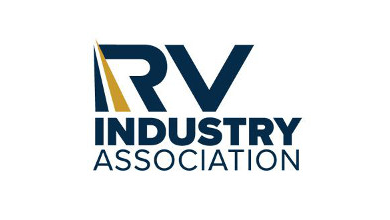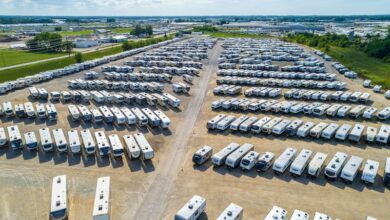It Can Be Easy Being Green
KOA encourages its campgrounds to achieve a “Kamp Green” designation, showing campers and their community steps they can take to operate sustainably.
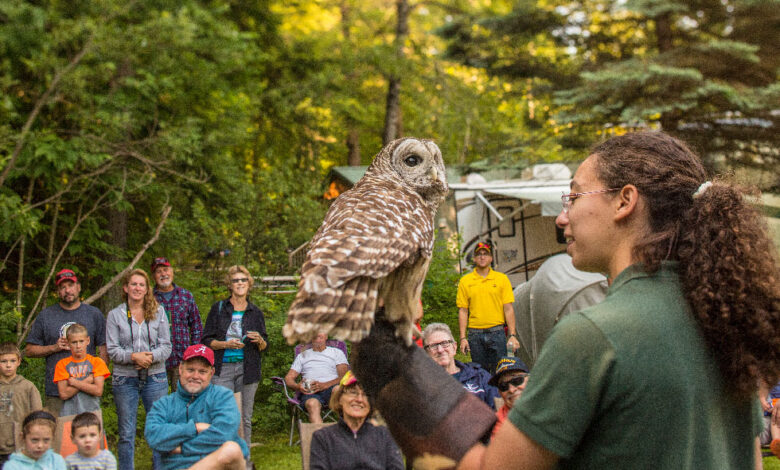
Leave No Trace is a concept many campers and hikers are familiar with. KOA Campgrounds are taking it to another level with their “Kamp Green” program.
Started in 2010, the program supports campground owners’ efforts to embrace environmentally friendly practices and educational events for guests. As KOA’s website states, “KOA leadership understands sustainability is a simple concept but a complex process — to sustain resources and avoid depletion, a campground must consider all environmental, economic and social factors involved.”
But with 75,000-plus campsites in the KOA family totaling more than 10,000 acres in the U.S. and Canada, small actions add up and make a significant difference, KOA says.
For the past six years, Stacey Campbell, director of Campground Design Services, System Operations, has helped encourage campground owners to embrace Kamp Green.
“The campgrounds in general are really good at conservation and sustainability because it’s their business,” she says. “To be efficient and improve their bottom line, obviously they need to watch their water and electricity. Those are big expenses, so they were all always pretty conscientious about it. But it wasn’t really something they talked about much.”
Making It Official
When Campbell arrived at KOA, one thing she put in place was a Kamp Green checklist — a way for the campgrounds to track their eco-friendly efforts and ratify those practices.
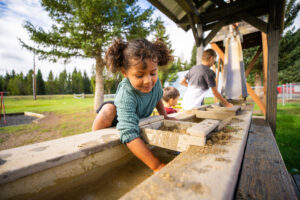 “This was just a way to formalize it, to recognize owners and campgrounds that were doing the right thing,” she says. “Then, by participating in this program, they get a lot of little extra marketing materials and education, they get the logo on their website, and they get a certification letter in their store. It really gives them opportunities to share more with campers.”
“This was just a way to formalize it, to recognize owners and campgrounds that were doing the right thing,” she says. “Then, by participating in this program, they get a lot of little extra marketing materials and education, they get the logo on their website, and they get a certification letter in their store. It really gives them opportunities to share more with campers.”
KOA uses this checklist system to encourage campgrounds to participate in the Kamp Green program. To achieve certification, campgrounds must complete at least one action in each category: Save Energy, Conserve Water, Divert Waste, Educate the Community.
Here is a summary of some of what some campground owners do to implement sustainable practices:
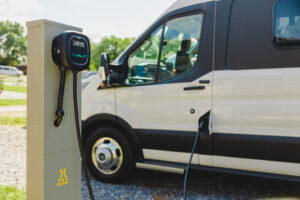 Review technical, educational and support information provided by KOA and other authoritative sources
Review technical, educational and support information provided by KOA and other authoritative sources- Provide fun educational programs for kids
- Provide resources or events for adults on how to camp green
- Stay updated on new information, innovations and options for sustainable practices
- Support organizations, funds, programs and efforts like park or wildlife sanctuary preservation
- Keep an active membership with conservation organizations
- Volunteer in local communities
- Host volunteer activities like Pick Up America
- Make tangible, eco-friendly improvements in practices, buildings, equipment and processes
- Invest in things like energy-efficient LED lights, motion-sensing or timer-based lighting, Energy Star appliances, solar pool heater or solar outdoor lighting
- Remind staff to turn off lights and computers, use smart thermostats, green transportation and energy-efficient windows
- Use low-flush toilets, energy-efficient showerheads and sinks, recycle water for landscaping or use smart irrigation
- Eliminate paper waste when possible, install recycling bins and water refill stations, and use nontoxic cleaning items
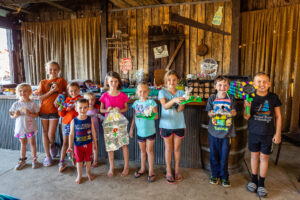 KOA also suggests ideas like investing in electric car charging stations or special additions to a property like bee or butterfly gardens. Other projects could be planting a community herb or produce garden, using locally sourced food, establishing nature trails, and holding celebrations for Earth Day and Arbor Day.
KOA also suggests ideas like investing in electric car charging stations or special additions to a property like bee or butterfly gardens. Other projects could be planting a community herb or produce garden, using locally sourced food, establishing nature trails, and holding celebrations for Earth Day and Arbor Day.
Larger scale projects that campground owners can also consider could be historic restoration on their property; remodeling their buildings and amenities using green, alternative energy sources; conducting water studies; and repurposing items instead of discarding them.
Going Green as a Differentiator
KOA has conducted research that shows if campers have two campgrounds to choose from, they would prefer one that has sustainable practices in place, even if it costs more to stay there. Experiencing things like composting for the cabins on some KOA properties, water bottle fill stations, beekeeping and other events for the community have become a popular part of the camping experience.
Last year, KOA partnered with Fill it Forward, which provides water bottles with a scannable QR code, and every time you fill the bottle and scan, Campbell says, money is donated to a water conservation project.
Kid campers are especially on board with the programs offered by the campgrounds, Campbell says.
“Their whole life they’ve been recycling, so they seem to enjoy that and do well with it,” she says.
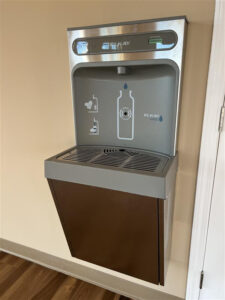 Campbell just so happens to work in a LEED-certified building at the KOA headquarters in Billings, Montana. (LEED stands for Leadership in Energy and Environmental Design.) In fact, the company has plans available for campground owners to construct their own eco-friendly facility if doing so is needed on their property.
Campbell just so happens to work in a LEED-certified building at the KOA headquarters in Billings, Montana. (LEED stands for Leadership in Energy and Environmental Design.) In fact, the company has plans available for campground owners to construct their own eco-friendly facility if doing so is needed on their property.
“Upfront [it’s] a little bit more expensive to build a LEED building,” Campbell says. “In the long run, it pays off in so many ways.”
KOA provides building plans for a store and check-in building to owners that is reminiscent of the iconic A-frame building of the past, but it’s designed to be more affordable and sustainable, and could be LEED-certified, too.
Kamp Green’s Future
For 2025, KOA’s focus for Kamp Green is “community involvement.” And as of the end of February, KOA had roughly 170 campgrounds signed up for its Kamp Green certification — so spreading that message to its more than 500 campgrounds is also on the docket.
 “Certainly, the goal is to continue to educate and inspire folks to do these things on their campgrounds to be part of the program,” Campbell says. “There’s a lot of people that are out there doing a lot of great things but sometimes just won’t take the time to fill out the paperwork.
“Certainly, the goal is to continue to educate and inspire folks to do these things on their campgrounds to be part of the program,” Campbell says. “There’s a lot of people that are out there doing a lot of great things but sometimes just won’t take the time to fill out the paperwork.
“[And] we will continue to focus … on education and community involvement. We want to encourage more educational programs, sharing what some people do where they bring in beekeepers or local birdwatching, whatever might be the right thing to be able to reach out into their communities to bring people in and share with them.”
A Commitment to Sustainability
The KOA approach to sustainability focuses on commitment to energy and water conservation, waste management and education. After all, KOA and camping are built upon a love of the great outdoors. By preserving vital resources like land, trees and water, campgrounds will remain vibrant and thriving for the next generation to enjoy.
KOA commits to sustainability through:
- Educating and inspiring: Eco-friendly campgrounds work to educate colleagues, campers and kids about the value of preserving natural resources through events, demonstrations, outreach programs and active stewardship. Kamp Green campgrounds inspire others by giving and volunteering in ways that support a healthy natural environment and the surrounding community.
- Doing the work: KOA does the work by engaging in energy and water conservation efforts and waste management programs to be good stewards of the land.
- Being exemplary: Kamp Green campgrounds set the example for others by taking risks, experimenting with new efforts and finding innovative and creative ways to care for and give back to the planet.
Source: koa.com
